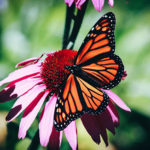A timelapse is a fun photographic technique to experiment with. Being able to watch the sun rise and set over a city skyline or see a flower bloom in just a few minutes is nothing short of amazing. But certain precautions must be taken when leaving your camera outside for long periods of time:
Things to consider when setting up your camera for a long-term timelapse:
- Safety – Make sure your camera is safe from both the natural elements and people. Your camera will not survive through rain, snow, hail, wind, and nosy animals without some kind of protection. Also make sure your camera is in a location where it won’t be disturbed by other people. Try to find a low-traffic place and secure your camera to something so that nobody steals it.
- Location – This goes along with safety too. Obviously you don’t want to leave your camera in a place where a person or large animal could easily knock it over or take it. Be aware of what your setting your camera on or securing it too. Are you putting it somewhere where it might move in the wind, like a tree? If you’re leaving it in a wet area or a place that floods easily, make sure it’s not too close to the ground or it could quickly become submerged.
- Batteries – Depending on how long you leave your camera out, you may need to change out the batteries from time to time.
- View – Be sure to place you camera some place where its view will not be easily obstructed by tree branches, cars, or any other obstacle. It may be wise to also check if any shadows cross the camera lens throughout the day. If a shadow covers your camera for a few hours everyday, the final timelapse may not look the best due to changes in exposure.
- Temperature – Different camera have different tolerances for high and low temperatures. Make sure your camera is within operating temperatures.
For Further Training on Time-lapse Photography:
There is a COMPLETE guide (146 pages) to shooting, processing and rendering time-lapses using a dslr camera. It can be found here: Time-lapse Photography Guide
Like This Article?
Don't Miss The Next One!
Join over 100,000 photographers of all experience levels who receive our free photography tips and articles to stay current:








Great article, as I am about to embark on a 30+ day timelapse of a construction project. The only thing not discussed here that would be helpful are the settings! What f-stop is best, consistent, what shutterspeed, Aperture priority or manual, ect… Will you deflicker ect… That’s the hardest part of timelapse work and I would love to know some thoughts regarding those issues.